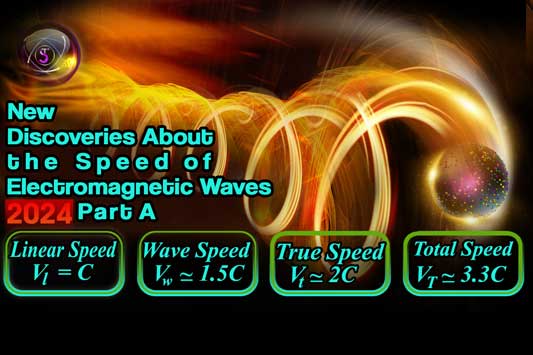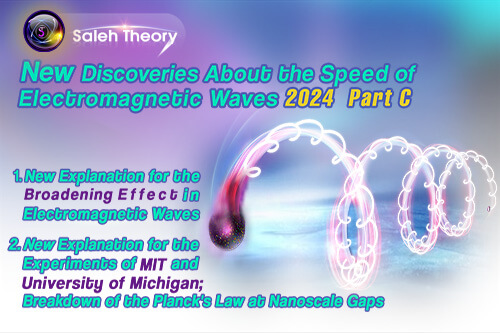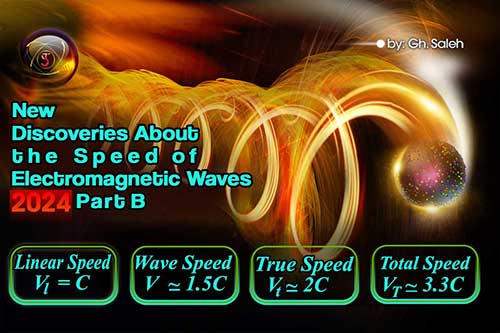
New Discoveries About the Speed of Electromagnetic Waves 2024 Part B
1. Calculation of the New Speed of Electromagnetic Waves Using Mathematical and Physical Equations in the Universe(Vw ≃ 1.5 C)
2. New Calculation of the True Speed of Electromagnetic Waves Using Mathematical and Physical Equations in the Universe (Vt ≃ 2 C)
3. New Calculation of the Speed of Nested Helical Motion in Electromagnetic Waves Using Mathematical and Physical Equations in the Universe (Total Speed; One Million Kilometers Per Second) (VT ≃ 3.3 C)
3. New Calculation of the Speed of Nested Helical Motion in Electromagnetic Waves Using Mathematical and Physical Equations in the Universe (Total Speed; One Million Kilometers Per Second) (VT ≃ 3.3 C)
If we look at the Milky Way galaxy, we find that stars, including the Sun, revolve around a central black hole. If we consider our own Solar System, we observe that planets, including Earth, rotate around the Sun. This orbital motion, in the next stage, extends to the natural satellites of planets, including the Moon. While the path of Earth's motion around the Sun is nearly circular on a small scale, if we also consider the Sun's motion around the central black hole of the Milky Way galaxy, the path of Earth's motion becomes helical. On a galactic scale, the Moon's orbit is slightly different because the Moon rotates around the Earth, Earth rotates around the Sun, and the Sun, in turn, rotates around the central black hole of the Milky Way galaxy. Therefore, Earth follows a helical path, but the Moon follows two helical paths.
In other words, given that each moon orbits around its planet and each planet orbits around its central sun, the combination of orbits 1 and 2 creates a helical pathway for a moon. If a star’s orbit around its central galactic black hole, which is a closed curve path, is added to the moon's path, the final path will be a combination of paths 1, 2, and 3. And, the path of moon will be a nested helical orbit.

The captured images from the Hubble and James Webb telescopes are good instant. In this image, we observe several similar and same galaxies. It can be easily said that these images represent a galaxy with a complex helical motion path. Considering that the complete rotation time of a galaxy around its cluster or supercluster center could be millions of years, and the distance of observers (Hubble/James Webb telescope) could be billions of light-years, it is evident that within the time interval that light reaches the telescope, the mentioned galaxy may have completed several cycles of its rotation. Therefore, when the image of that galaxy reaches the telescope, we see a multi-galaxy image. Actually, the time difference between the arrival of light from the galaxy to the observer and the time of one complete rotation of the galaxy in its orbit, causes us to see several similar and same galaxies.
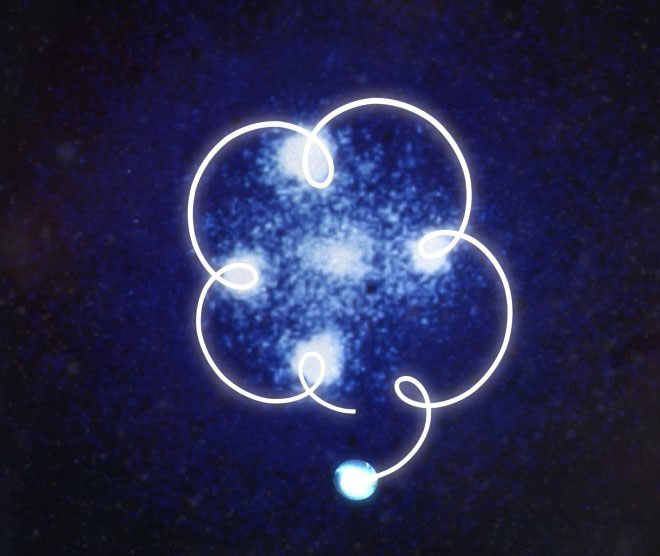
In the light of understanding such motion in the universe, we turn to study the motion's path of a photon emitted from an electron. The emission of a photon from an electron is a projectile motion that causes the photon to be emitted at the speed of (C). However, the electron itself possesses a rotational motion around the nucleus, the combination of these two motions results in the emitted photon moving along a helical path. In fact, the first helical motion of a photon, results from the combination of the linear projectile motion caused by the emitting from the electron and the rotational motion of the electron around the nucleus of the atom.
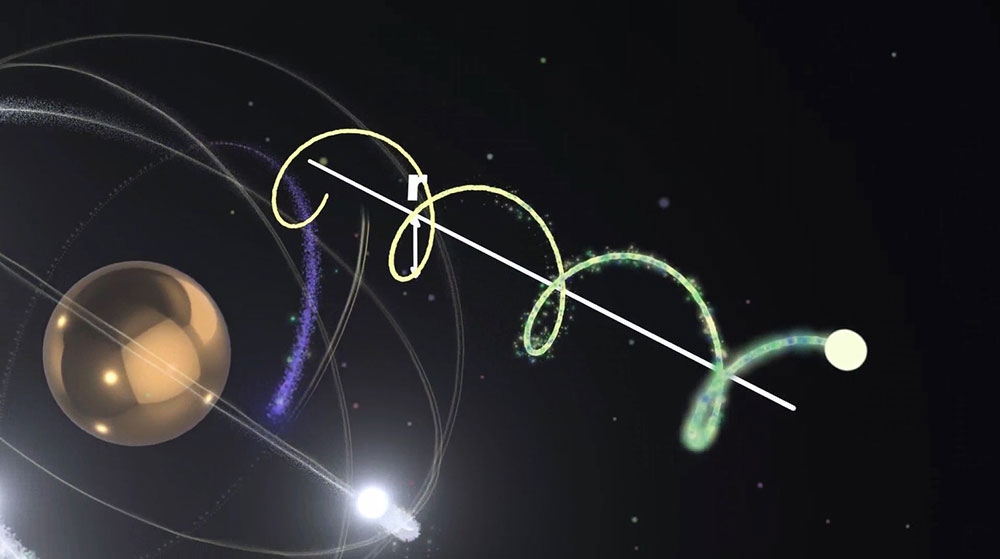
Also, the electron has its own rotational motion around itself, spin. Given that the radius of an electron is much larger than that of a photon (approximately 200 times), another rotational motion is imposed on the photon. As a result of this rotational motion, another helix is created which we call a small helix.
Therefore, when a photon emits from an electron, it will have two small and large helical motions with a constant linear speed of 'C', and the following equations can be considered:
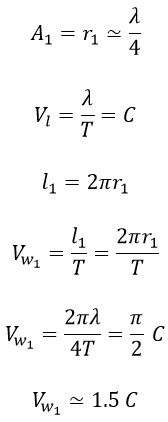
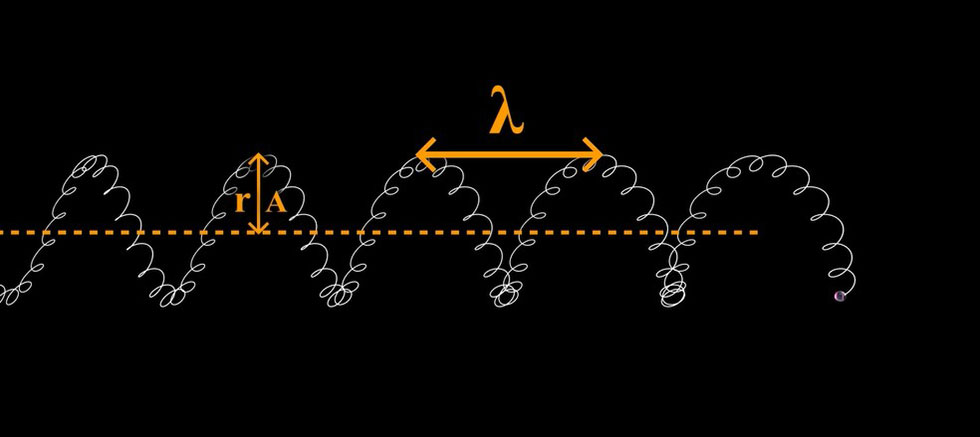
where "A1" is the wave's amplitude which is equal to the radius of the photon's helical motion "r1", “λ” represents wavelength, "Vl" is the linear speed, "T" is period, "C" is the speed of light, "l1" is the path length of a photon in one complete period and "Vw1" is the wave or rotational speed of a photon in large helical motion.
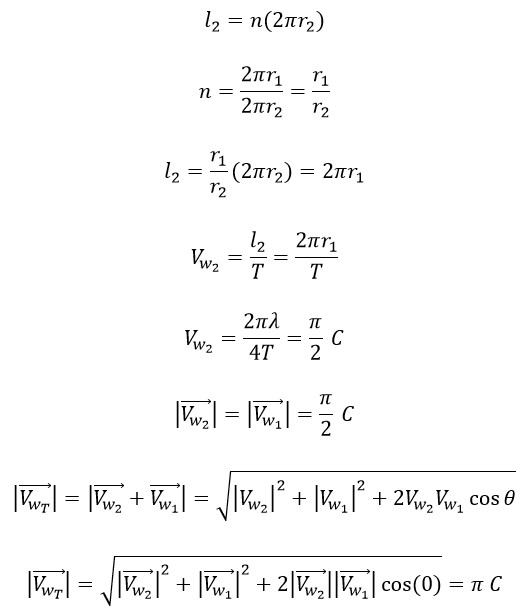
Where "l2" is the path length of a photon in small helix in one complete period of big helical motion, "n" is the number of circles of small helix during on complete circle of big one, "r1" is the radius of small helix, "Vw2" is the wave or rotational speed of a photon in small helical motion and "VwT" is the total rotational speed.
According to the figure, the total speed of a photon can be obtained from the following equations:
The total speed is equal to the sum of the speeds of a photon in two helical paths plus the linear speed
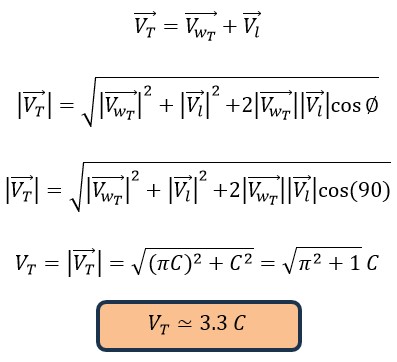
Result:
For electromagnetic waves, 4 types of speed can be defined:
1. Linear speed
2. Wavelike speed
3. True speed
4. Total speed
The important note is that these 4 speeds are among the intrinsic characteristics of electromagnetic waves, and depending on different conditions, these 4 speeds can be used. In other words, different speeds are considered based on the path, direction, observer, and so on.



